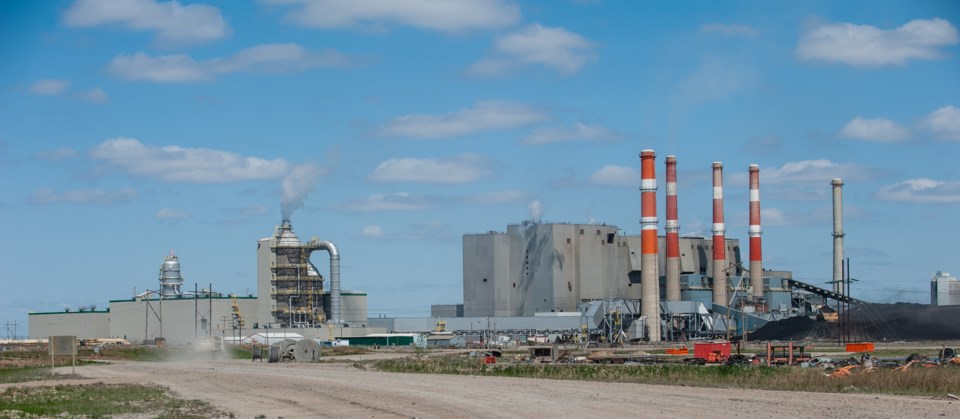On Feb. 28, the provincial government announced it was giving $8 million to Estevan and $2 million to Coronach to assist with their respective “coal transition.”
Premier Scott Moe was there to make the announcement, along with Estevan MLA and Minister of Government Relations Lori Carr. Speaking gratefully on behalf of Estevan and Coronach were their respective mayors, Roy Ludwig and Trevor Schnell. Both were thankful, and said the money would go to economic development. But its quite clear, both would prefer to keep their coal mines and power plants. Should they be lost, it will be very difficult for both communities. In the case of Coronach, utterly devastating would be an understatement.
That $10 million is spread over three years. We need to put this in perspective. I understand an average unionized salary at the Estevan Mine would be in the range of $110,000 to $120,000. Now, I expect there’s going to be a fair bit of range between someone who works as custodial staff and someone operating a dragline, as well as substantial differences when it comes to people who work a lot of overtime. But let’s be conservative and use $100,000 as a round number.
Eight million dollars is the equivalent of the salaries of 80 miners in Estevan for one year, and $2 million is the equivalent of 20 miners in Coronach for one year.
Indeed, I would estimate these values are substantially less than the provincial income tax alone from the staffs of the three affected powerplants and two mines, for just one year.
The United Mine Workers of America represents 325 workers at the Estevan Mine. The International Brotherhood of Electrical Workers represents approximately 600 workers between the Poplar River Power Station, Poplar River Mine, Boundary Dam Power Station and Shand Power Station. This does not include out-of-scope staff, which must number in the hundreds between the five facilities.
So it is good the province is helping, offering something of a lifeline. Hopefully these communities will be able to wisely use those funds to develop economic development strategies that will lessen the blow.
The federal government, too, has provided some coal transition funding. But again, none of it comes anywhere close to replacing the salaries of the hundreds of workers at stake, should conventional coal come to an end by 2030. I don’t expect the Boundary Dam 3 Integrated Carbon Capture and Storage project, even with an equivalency agreement for other generation, will be enough to keep the mines open beyond that date.
Premier Moe laid out three possible options, one of which appears to be new. The first is the additional application of carbon capture and storage. The discussion to this point has been regarding the Shand Power Station. The mayor of Coronach does not expect to see it applied there. But if the federal government applied a tax credit like the Americans recently implemented called 45Q, that could change the game, according to Moe.
The second, and new option, is natural gas-fired power generation. To replace Boundary Dam and Shand, you would likely need a three-unit facility, each producing 350 megawatts. Add in Poplar River, and you’re looking at another one to two units, but where that would be built is not clear. Would you build that at Moose Jaw, Estevan, or Poplar River? Moe suggested making use of existing transmission infrastructure. That makes sense for Estevan, as southeast Saskatchewan, and its oilfields, would still need substantial power generation, but less so for Poplar River.
The recent $605 million 350 megawatt, one-unit Chinook Power Station employs around 25 people. Not hundreds.
The third option Moe mentioned is small modular reactors. This is quite literally the nuclear option. He’s been talking about it a lot, but the time horizon of actually having such generation in place within 10 years, as coal is phased out, gets less likely be the day. When I was a kid, mankind was 15 years away from going to Mars. Today, we’re still 15 years away. Nuclear seems to be the same sort of exercise for Saskatchewan.
Nuclear would also have to survive the inevitable change in government some time between now and then. It might not be this election, or even the next, but eventually the government will change. The provincial NDP hasn’t been a big fan of nuclear power.
If maintaining jobs and communities are the key factor, carbon capture, applied both at Shand and Poplar River, is the key effort that everyone should be pushing the hardest. Doing so would keep the mines open, as well as the power stations. In addition to the hundreds of miners, it would keep hundreds of power station workers employed, too. It would save and sustain both Estevan and Coronach.
But more importantly, from an oilpatch perspective, the captured CO2 could be used to reinvigorate the oilfields of southeast Saskatchewan, much as it has for the Weyburn and Midale Units. Doing so means decades of additional oil production, employing hundreds of additional people and hundreds of millions in oil royalties, for the province and mineral rights owners.
Don’t forget, we have hundreds of years of coal reserves, and lots of oil left in the ground.
We have to remember – all this pain is because the federal government has decided coal is bad, even though we can install carbon capture to make it basically “clean coal.”
I asked Mayor Schnell if Coronach was a sacrificial lamb on the alter of global warming, he said, “I guess so, unfortunately.”
��
Brian Zinchuk is editor of Pipeline News. He can be reached at [email protected].
��
��
��




